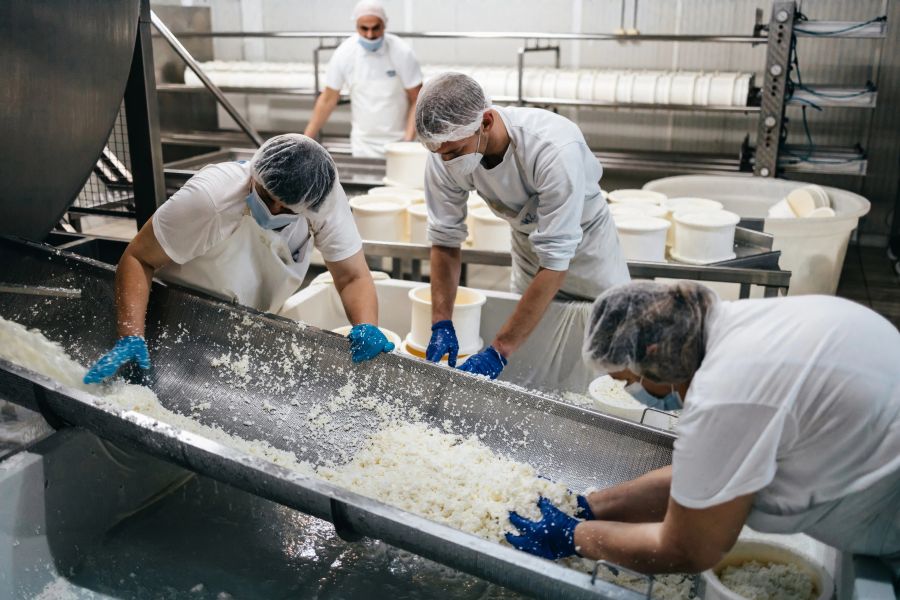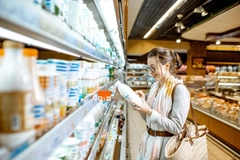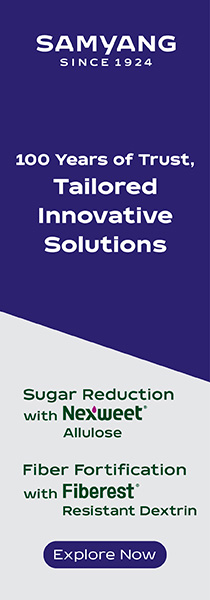Kerry: Addressing the consumer trust gap amid global lactose-free dairy boom
Key takeaways
- Lactose-free dairy market is projected to reach US$28 billion by 2033, but 36% of consumers don’t trust “lactose-free” labeling.
- Kerry combines lactase enzymes with Tastesense solutions to reduce added sugar by up to 70% while maintaining authentic dairy taste.
- LactoSens test kit provides three-minute on-site lactose testing to address consumer trust deficit with documented proof for every batch.
Industry projections forecast the global lactose-free market to be worth US$28 billion by 2033. However, as the category expands, manufacturers face a persistent challenge regarding consumer perception — 36% of consumers don’t trust “lactose-free” labeling to be genuine, according to Kerry’s Dairy Decode research. At the same time, mixed views on taste continue to plague products positioned as healthier alternatives.
Kerry is addressing these credibility issues through a multi-technology approach combining lactase enzymes with taste optimization solutions, alongside an industrial testing kit designed to provide documented proof of lactose removal for every batch.
The company’s strategy reflects growing recognition that the lactose-free and reduced-sugar dairy category faces both enormous growth potential and fundamental trust problems.
“Consumer demand for healthier, better-for-you products is at an all-time high,” Katy McCall, senior product manager for lactases at Kerry, tells Food Ingredients First. “Two-thirds of the global population has some degree of lactose intolerance, making lactose-free options a necessity.”
While milk accounts for the most growth in the lactose-free market, lactose-free yogurt sales have surged significantly in the US, suggesting the category is moving beyond digestive issues alone.

The sugar reduction imperative
The push for reduced-sugar dairy intersects with lactose-free demand, creating a dual challenge for manufacturers. According to Innova Market Insights consumer research, sugar is the top ingredient consumers are most conscious of limiting or reducing in their diet, followed by fat and sodium. A solid majority of consumers would rather cut back on sugar than use sugar alternatives.
“As many as 45% of consumers want less sugar in their dairy drinks and yogurts,” McCall says. “Some 46% of European consumers believe dairy products are high in sugar, creating a key barrier to purchase.”
“At the same time, according to Kerry’s Sensibly Sweet research, consumers are strongly looking to lower their sugar intake, with 73% of global consumers either reducing or seeking ways to lower their sugar consumption,” McCall says.
This push for healthier ingredients and transparency is reflected in regulatory changes like the UK’s High Fat, Sugar, and Salt (HFSS) regulations and front-of-pack labeling systems in Europe and Latin America.
Crucially, while taste is the most important factor for consumers, health and price are the next biggest drivers in the purchasing decision.
Enzyme technology meets taste optimization
The company emphasizes what McCall calls a “no compromise” philosophy on taste, addressing one of the category’s fundamental challenges. Research from Innova Market Insights shows that natural, safe, and low sugar claims are the top claims influencing dairy yogurt purchases, with 23% and 19% of consumers in the DACH region looking for low, no or reduced sugar when buying dairy and non-dairy yogurt, respectively.
“Kerry’s approach combines lactase enzymes that break down lactose into glucose and galactose — simpler sugars that are naturally sweeter than lactose — with its Tastesense portfolio of taste solutions.”
Kerry’s multi-technology approach combines lactase enzymes with taste optimization to reduce added sugar by up to 70% in dairy products.“By combining this natural sweetness enhancement with Kerry Tastesense, a portfolio of taste solutions designed to optimize sweetness, improve mouthfeel, and balance overall flavor profile, manufacturers can reduce added sugar by up to 70% while maintaining the authentic dairy taste and natural sweetness consumers expect,” McCall says.
“By leveraging the natural sweetness from lactose hydrolysis, our solutions help avoid any off-notes or bitterness often associated with alternative sweeteners,” she continues. “The supreme purity of our lactase enzymes, such as NOLA Fit, the purest enzyme on the market, is crucial, guaranteeing the authentic, clean taste of the product.”
Kerry’s Tastesense portfolio also includes solutions to rebuild authentic mouthfeel, ensuring that dairy products like yogurts and drinks don’t become thin or watery when sugar is reduced. This addresses a critical issue.
“Despite the desire for lactose-free and reduced-sugar options, there are still mixed views on the taste, and further work is needed to educate and enhance consumer perception that these improved products taste just as good as regular dairy,” McCall says.
Addressing the trust deficit
 The LactoSens test kit provides three-minute on-site lactose testing to address consumer trust concerns in the lactose-free dairy market.Kerry’s LactoSens test kit represents a direct response to the trust problem in lactose-free dairy. The industrial solution allows dairy manufacturers to test residual lactose levels on-site, providing precise results in under three minutes compared to traditional methods that can take days.
The LactoSens test kit provides three-minute on-site lactose testing to address consumer trust concerns in the lactose-free dairy market.Kerry’s LactoSens test kit represents a direct response to the trust problem in lactose-free dairy. The industrial solution allows dairy manufacturers to test residual lactose levels on-site, providing precise results in under three minutes compared to traditional methods that can take days.
“This is essential as 36% of consumers sometimes do not trust ‘lactose free’ labeling to be genuine, highlighting the need for manufacturers to instill complete trust,” McCall says. The technology is validated against the ion-chromatography reference method and externally certified, providing documented proof for lactose-free claims for every batch.
The test kit supports both new product development by testing the efficiency of lactose removal solutions and quality control, by ensuring consistent quality across continuous batch testing. “It’s highly specific, so it’s not affected by other sugars or ingredients like coffee, chocolate, or fruit,” McCall says. This real-time measurement cuts costs by eliminating the need for external laboratory analysis.
Clean label considerations
Supporting clean label claims remains a key priority as consumers associate “natural dairy” with minimal processing and additive-free attributes. Kerry’s lactase enzyme is considered a processing aid in many regions, meaning it doesn’t need to be listed on product labels. Meanwhile, Tastesense Sweetness is classified as a natural flavoring.
“When a product already contains a natural flavor, adding Tastesense keeps the label clean,” McCall says. Even when a new natural flavor needs to be added, consumers are highly receptive, as it aligns with their preference for natural ingredients over artificial ones.
This is particularly important because 30% of consumers are concerned that products labeled “no added sugar” may contain artificial sweeteners, with a further 8% avoiding the product as they prefer natural sweetness, according to Kerry’s Dairy Decode research. Innova Market Insights research similarly shows that consumers globally do not trust artificial sweeteners, and newer sweeteners are a source of confusion.
Innova Market Insights market launch tracking shows growth in lactose-free claims in yogurt, with more dairy-based yogurt products citing lactose-free claims in the past year. Sales and volume in the global yogurt market have been steadily rising throughout the past five years, with 5% and 6% CAGR, respectively, with predictions that the growth rate will quicken in the next five years to a projected 6% CAGR in sales and 7% CAGR in volume.














